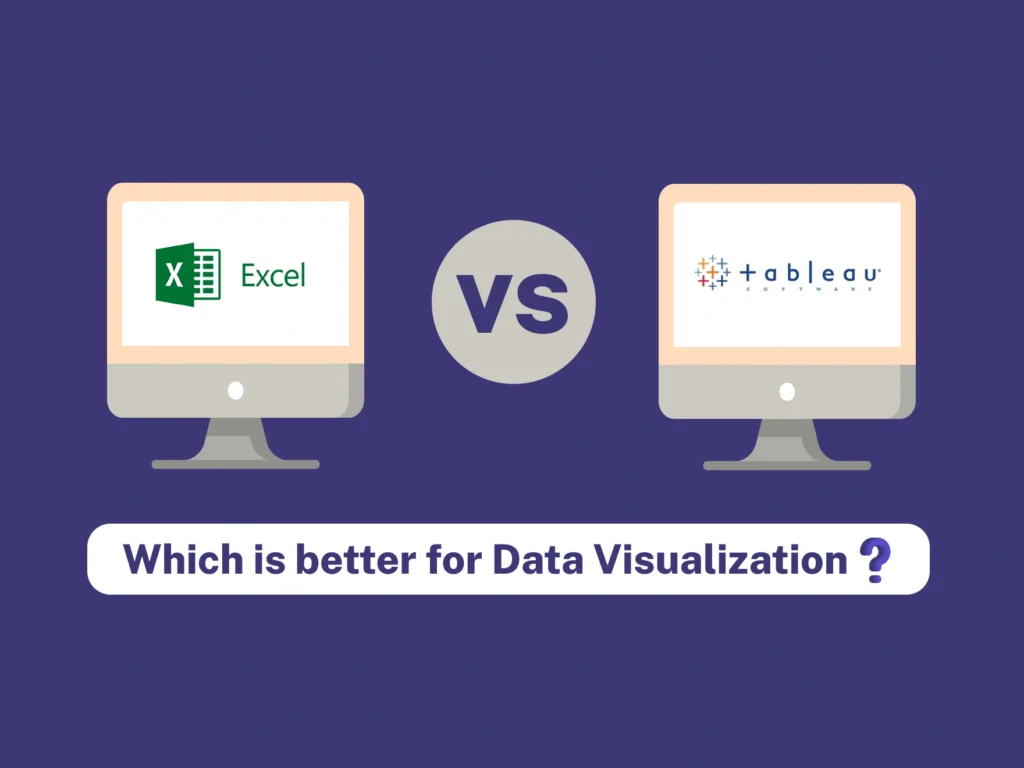It was a Monday morning in a buzzing marketing agency. Meera, a fresh graduate, sat nervously as her manager handed her a task: “We need to figure out why sales dropped last quarter. Use the tool you know.”
She opened Excel—familiar, straightforward. Within an hour, she had cleaned the data, created pivot tables, and added a few charts. It made sense—until her colleague Ravi walked over, clicked open Tableau, and in minutes transformed the same raw data into a live, interactive dashboard that told a visual story of customer behavior, regional sales dips, and market trends. The whole team was awestruck.
The difference? Meera analyzed. Ravi visualized. And in 2025, data storytelling wins.
Excel vs. Tableau: What’s the Difference?
Both Excel and Tableau are powerful tools used in data analysis, but they serve different purposes. While Excel is like a Swiss Army knife for spreadsheets, Tableau is the artist’s brush for painting with data.
Microsoft Excel: The Traditional Tool
Best Tool for:
- Basic data analysis and calculations
- Cleaning, organizing, and formatting data
- Creating pivot tables and standard charts
- Financial modeling and ad-hoc reporting
Pros:
- Easy to learn, widely used
- Flexible formulas and functions
- Great for small to medium-sized datasets
Cons:
- Struggles with large data volumes
- Limited interactive visualizations
- Manual updates can be time-consuming
Keyword Tip: how to use Excel for data analysis, Excel pivot table tutorial, Excel vs Tableau for beginners
Tableau: The Visual Powerhouse Tool
Best Tool for:
- Visualizing large, complex datasets
- Creating interactive dashboards
- Business Intelligence (BI) and real-time insights
Pros:
- Drag-and-drop interface for stunning visuals
- Connects to multiple live data sources
- Great for storytelling with data
Cons:
- Steeper learning curve
- Requires proper data preparation
- Paid version for full features
Keyword Tip: is Tableau better than Excel, how to learn Tableau, Tableau dashboard examples
Which Data Analytics Tool Should You Learn in 2025?
Here’s the honest truth: you need both.
In a world where data is king, companies want employees who can analyze, visualize, and act on data. Excel gives you the foundation. Tableau gives you the edge.
Think of Excel as your notebook—great for calculations, experimentation, and keeping track. Tableau is your presentation stage—perfect for showing your insights to the world.
Whether you’re in marketing, finance, HR, data science, or tech, mastering both gives you a competitive advantage.
Real-World Applications: Where Each Tool Shines
Excel:
- Budget tracking for startups
- Monthly sales reports
- Inventory management in retail
Tableau:
- Customer segmentation in marketing
- Real-time performance dashboards in HR
- Predictive analytics in supply chain
Excel vs. Tableau: Which is the best tool?
There’s no one-size-fits-all. If you’re just getting started in data analysis, start with Excel to build your fundamentals. But if you want to land roles in data science, business intelligence, or marketing analytics, learning Tableau is a must.
Want to future-proof your career?
Learn Both the Smart Way with FACE Prep Campus!!
At FACE Prep Campus, we don’t just teach tools—we train you for the future. Our Next-Gen UG programs equip students with hands-on experience in Excel, Tableau, Google Data Studio, and more. You’ll work on live projects, digital campaigns, and business simulations.Get certified, build a strong portfolio, and be job-ready in today’s data-driven world.
